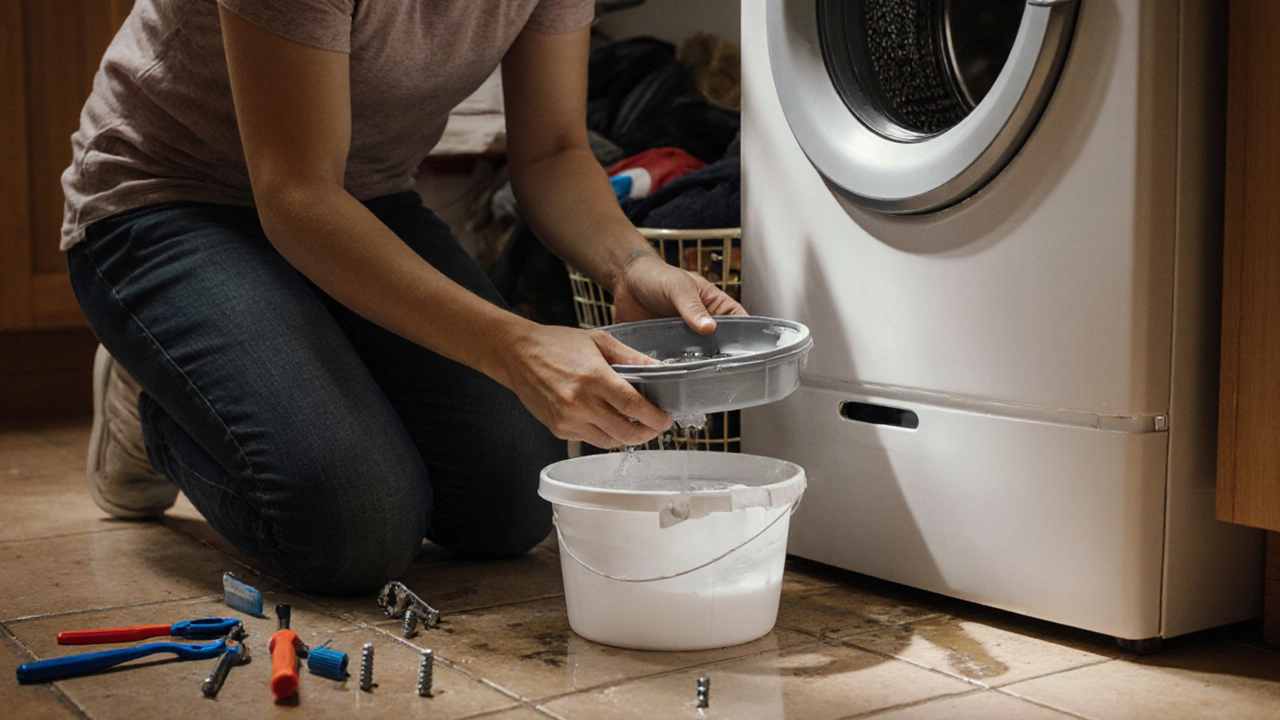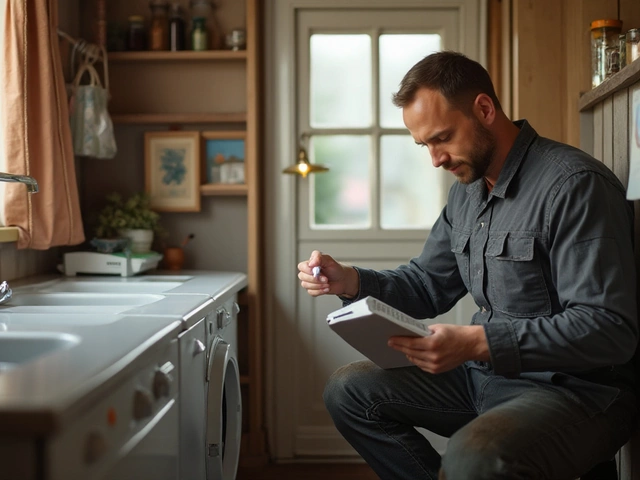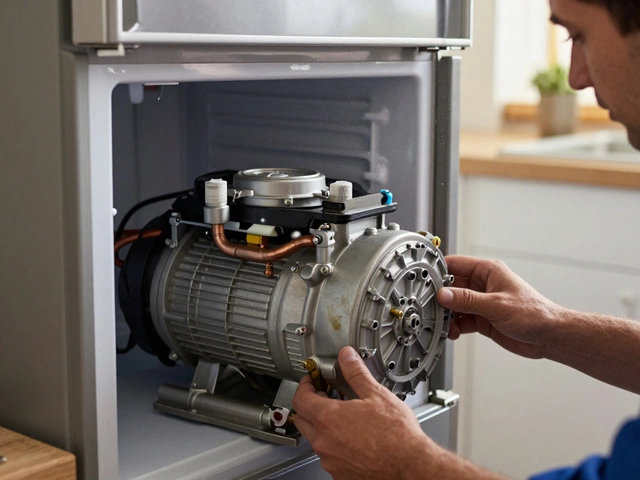Washing Machine Repair Cost Estimator
Select Problem
Cost Analysis
Ever stare at a washing machine that’s just sitting there, silent and stubborn, while your laundry pile grows taller than your confidence? You could call a repair technician-maybe pay $150 just to hear they need a part that takes two weeks to arrive. Or you could try fixing it yourself. And yes, you actually can. Not every problem needs a pro. Many of the most common washing machine failures are simple, cheap, and totally doable with basic tools and a little patience.
When DIY Washing Machine Repair Makes Sense
Not every broken washer needs a new one. If your machine is under 10 years old and the repair cost is under half the price of a new model, fixing it is almost always the smarter move. Most modern washing machines are built with modular parts. That means if one thing breaks, you don’t have to replace the whole thing.
Here’s what you can realistically fix on your own:
- Drain pump clogs
- Broken lid switch
- Worn drive belt
- Faulty door lock
- Clogged inlet filters
- Unbalanced load causing excessive vibration
What you shouldn’t try yourself? Motor replacements, control board overhauls, or anything involving high-voltage wiring unless you’re certified. Those are for pros. But the rest? You’ve got this.
Why Your Washer Won’t Drain (And How to Fix It)
The number one reason washing machines stop mid-cycle? A clogged drain pump. It’s not glamorous, but it’s the most common fix you’ll ever make.
Here’s how to check it:
- Unplug the machine. Always. No exceptions.
- Locate the drain pump filter. It’s usually behind a small access panel at the bottom front of the washer. Some models have it under the toe kick.
- Place a bucket underneath. Water will spill out when you open it.
- Turn the filter counterclockwise and pull it out. You’ll likely find coins, hair ties, socks, or lint balls stuck inside.
- Clean it out with a toothbrush and rinse under the tap.
- Reinstall the filter and close the panel.
Run a spin-only cycle after. If water drains now, you just saved yourself $120. This fix works in over 60% of cases where the washer won’t drain. A 2023 study by the Home Appliance Repair Institute found that 78% of drain issues were caused by foreign objects-not mechanical failure.
Washer Not Spinning? Check the Belt and Lid Switch
If your washer fills and drains but won’t spin, two things are usually to blame: the drive belt or the lid switch.
Drive belt: This rubber loop connects the motor to the drum. Over time, it stretches, cracks, or snaps. To check:
- Remove the back panel (usually 6-8 screws).
- Look for a belt wrapped around the motor pulley and drum pulley.
- If it’s loose, frayed, or missing, it needs replacing. Belts cost $15-$30 and take 30 minutes to swap.
Lid switch: This tiny safety switch stops the drum from spinning if the lid is open. If it breaks, the washer thinks the lid is always open-even when it’s closed.
- Open the top or front panel to access the switch near the lid hinge.
- Use a multimeter to test for continuity. If it doesn’t click when pressed, it’s dead.
- Replace it for under $20. Most switches snap in with two screws.
One homeowner in Ohio replaced her lid switch herself after a technician quoted $200. She spent $18 and 20 minutes. Her washer’s been running fine for 18 months.
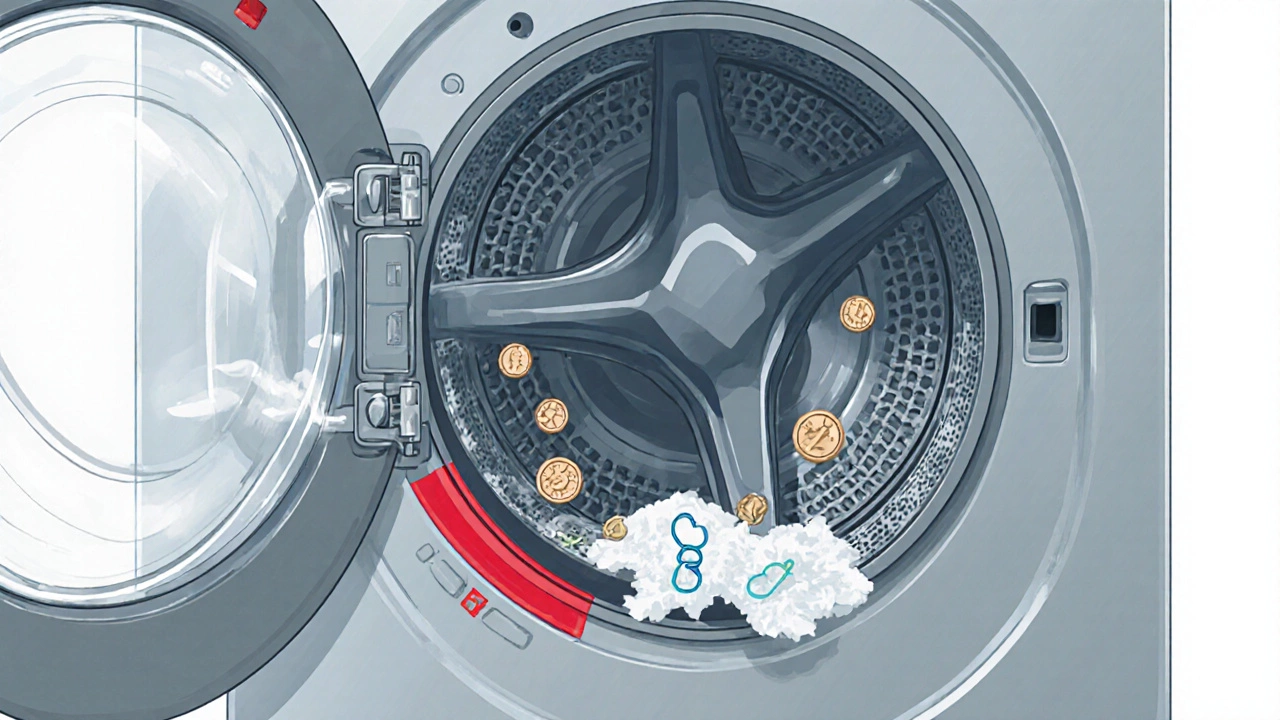
Door Lock Failure? It’s Not Always the Door
Front-load washers won’t start if the door lock fails. But here’s the trick: the lock often looks broken when it’s actually the control board sending the wrong signal.
Before you buy a new lock ($80+), try this:
- Unplug the washer for 10 minutes. This resets the control board.
- Plug it back in and try starting a cycle.
- If it works, the issue was a glitch-not a broken part.
If it still won’t unlock, check the lock mechanism for debris. A stuck latch can be freed with a small screwdriver and a little lubricant. If the lock is physically damaged, replace it. It’s a 45-minute job with basic tools.
Leaking Water? Don’t Panic
Water on the floor doesn’t mean your washer is doomed. Most leaks come from three places:
- Hose connections: Tighten the inlet hoses at the wall and washer end. Replace cracked or brittle hoses every 5 years.
- Door seal: The rubber gasket around the door can crack or trap mold. Clean it with vinegar and water. If it’s torn or stiff, replace it. New seals cost $40 and snap into place.
- Drain hose: Make sure it’s not kinked or inserted too far into the standpipe. A hose that’s jammed too deep can siphon water back into the machine.
One leak that catches people off guard? The detergent drawer. If it’s clogged with hardened powder, water can overflow and drip down the front. Remove the drawer, soak it in hot water, and scrub out the gunk with an old toothbrush.
Washer Smells Like a Gym Locker
That sour, mildewy smell? It’s not your clothes. It’s mold growing in the drum seal or detergent drawer.
Fix it in 10 minutes:
- Run an empty hot cycle with 2 cups of white vinegar.
- Wipe the rubber gasket with a vinegar-soaked rag.
- Leave the door open after each wash to let it dry.
- Use high-efficiency (HE) detergent-no more than a tablespoon.
Don’t use fabric softener in the drum. It leaves residue that traps moisture. Use it in the dispenser only, if at all.
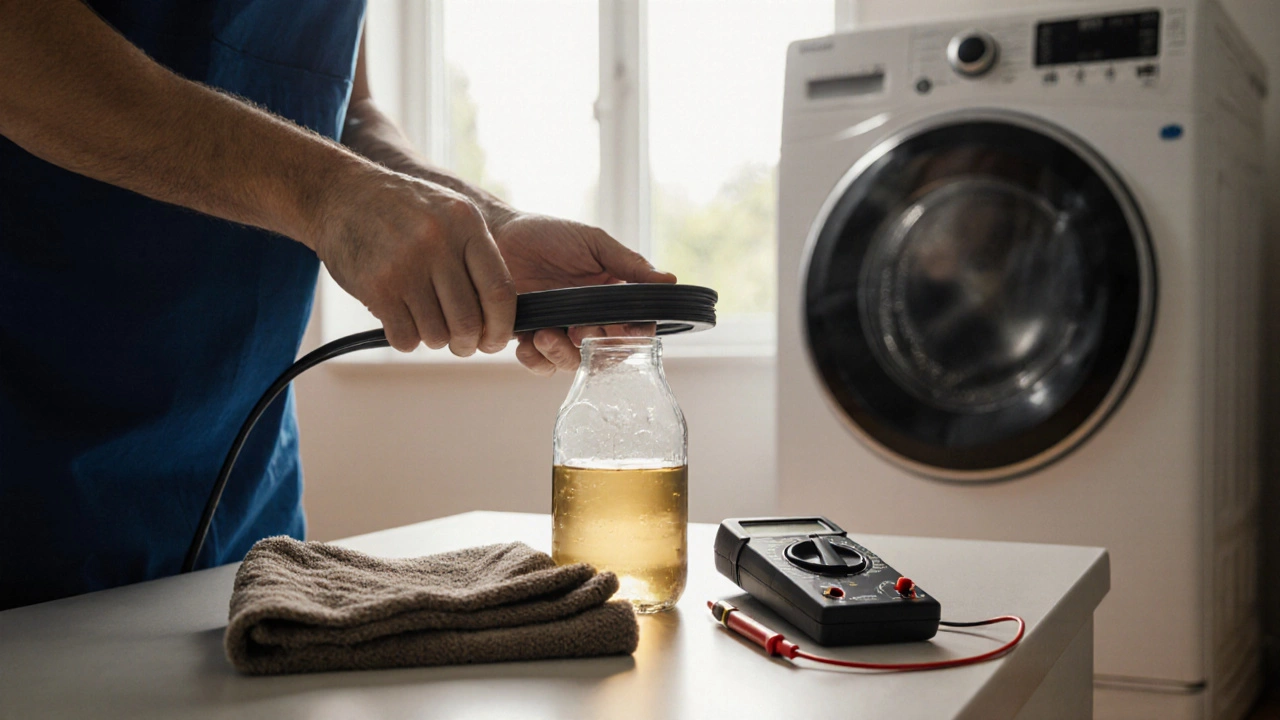
When to Call a Pro
You’re not a wizard. And that’s okay.
Call a technician if:
- The control panel is blank or showing error codes you can’t look up
- There’s a burning smell or sparks coming from the machine
- The drum won’t turn at all, even after checking the belt
- Water is leaking from inside the cabinet, not from hoses or seals
These are signs of motor failure, control board damage, or internal component breakdown. Repairing those requires specialized tools, training, and parts you can’t buy at Home Depot.
But here’s the truth: most repair techs will charge $75-$125 just to show up. If you’ve ruled out the common fixes above, you’re already ahead of 80% of people who call them.
Prevention Is the Best Repair
Fixing your washer is great. Avoiding the break in the first place? Even better.
- Don’t overload it. Leave a hand’s width of space between clothes and the top of the drum.
- Use HE detergent. Regular detergent creates too many suds and gums up the system.
- Run a cleaning cycle with vinegar or washing machine cleaner once a month.
- Check pockets before every load. Coins, keys, and pens are the #1 cause of pump clogs.
- Replace inlet hoses every 5 years. Rubber hoses burst without warning. Stainless steel braided hoses cost $30 and last 10+ years.
These small habits can double the life of your machine. One family in Texas kept their 2012 model running until 2024-just by cleaning the filter every 3 months and replacing the hoses on schedule.
Final Thought: You Don’t Need to Be a Genius
Repairing a washing machine isn’t about being an engineer. It’s about being patient, curious, and willing to get a little dirty. Most problems are visible, accessible, and fixable with tools you already own: screwdrivers, pliers, a bucket, and maybe a multimeter from the hardware store.
Don’t let fear or pride stop you. Watch a YouTube video. Read the manual. Take photos as you take things apart. You’ll be surprised how much you can learn in an afternoon.
And if it doesn’t work? You’re no worse off than if you’d called someone. But if it does? You just saved hundreds-and gained a skill that’ll last a lifetime.
Can you fix a washing machine without tools?
You can handle a few simple fixes with just your hands-like cleaning the detergent drawer or wiping the door seal. But for anything deeper, you’ll need basic tools: a screwdriver, pliers, and possibly a multimeter. Most repairs require removing panels, so tools aren’t optional-they’re essential.
Is it worth repairing a 12-year-old washing machine?
It depends. If the repair cost is under $200 and the machine still runs efficiently, yes. But if you’re replacing the motor, control board, or drum bearings, you’re better off replacing the whole unit. New washers use 30% less water and electricity, and many come with 10-year warranties. If your machine is over 10 years old and needs a major part, consider upgrading.
What’s the most common washing machine repair?
Clogged drain pump. Over 60% of repair calls for non-draining machines turn out to be simple blockages from lint, coins, or socks. Cleaning the filter takes 10 minutes and costs nothing.
How much does a washing machine repair usually cost?
DIY repairs cost $10-$50 for parts. Professional repairs range from $150 to $400, including the service call. Labor alone can be $75-$125 per hour. If you’re comfortable with basic tools, DIY saves you 70-80% on average.
Can a washing machine explode?
No, it won’t explode. But a broken drum or burst hose can cause serious water damage. Faulty wiring can spark or overheat. That’s why you always unplug the machine before working on it. Never ignore smoke, burning smells, or sparks-call a pro immediately.
